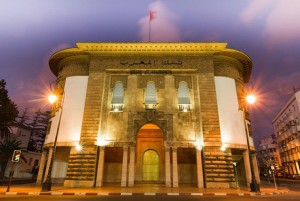Yahoo News
Reuters
by Aziz El Yaakoubi
Morocco’s economic growth will jump to 4.2 percent next year from an estimated 1.2 percent in 2016 on the back of sharply rising agricultural output, the central bank said on Tuesday.
The bank made the bullish projection as it kept its benchmark interest rate unchanged at 2.25 percent.
Abnormally dry weather across North Africa slashed the cereal harvest last season to 3.35 million tonnes, down 70 percent from the previous record 11 million tonnes. Last year’s drought was the worst in 30 years, the government said.
But early season rainfall this year is up 22 percent from a normal year and up 107 percent from last year.
The bank, known as Bank al-Maghrib, revised down this year’s overall growth estimates to 1.2 percent from 1.4 percent.
It lowered its key interest rate to 2.25 percent from 2.5 percent in March, its first cut in more than a year, to support the economy, in which agriculture accounts for more than 15 percent.
The bank said it expected inflation to remain around 1.6 percent in 2016 and fall to 1 percent in 2017.
Based on an average global oil price of $43.1 a barrel, the current account deficit should reach 2.8 percent of gross domestic product in 2016, slightly higher than expected, and 2.1 percent in 2017.
Bank al-Maghrib has been preparing to introduce a flexible exchange rate system in 2017. Governor Abdellatif Jouahri said the Moroccan dirham is at a balanced level and he does not expect a devaluation before or after the move.
“In our inflation forecast for 2017 and 2018, we have included the effects of introducing a more flexible exchange rate system,” Jouahri told reporters.
The International Monetary Fund had said earlier this month it does not predict volatility as all the conditions to manage a smooth transition to the dirham flotation have been prepared.
The trade deficit widened by 18 percent to 166.03 billion dirhams ($16.43 billion) in the first 11 months of 2016, reflecting a significant rise in imports.
The bank said the budget deficit would narrow to 3.5 percent of GDP in 2016 if the government maintained its current fiscal policy, and fall to 3.1 percent in 2017, as planned by the government in 2017 draft national budget.
Foreign exchange reserves will continue to increase, it said, though at a slower rate than previously expected. It should stand at around six months and 21 days of import needs at the end of 2016, and seven months at the end of 2017, the bank said.
(Editing by Tom Heneghan)








